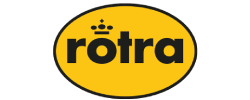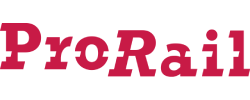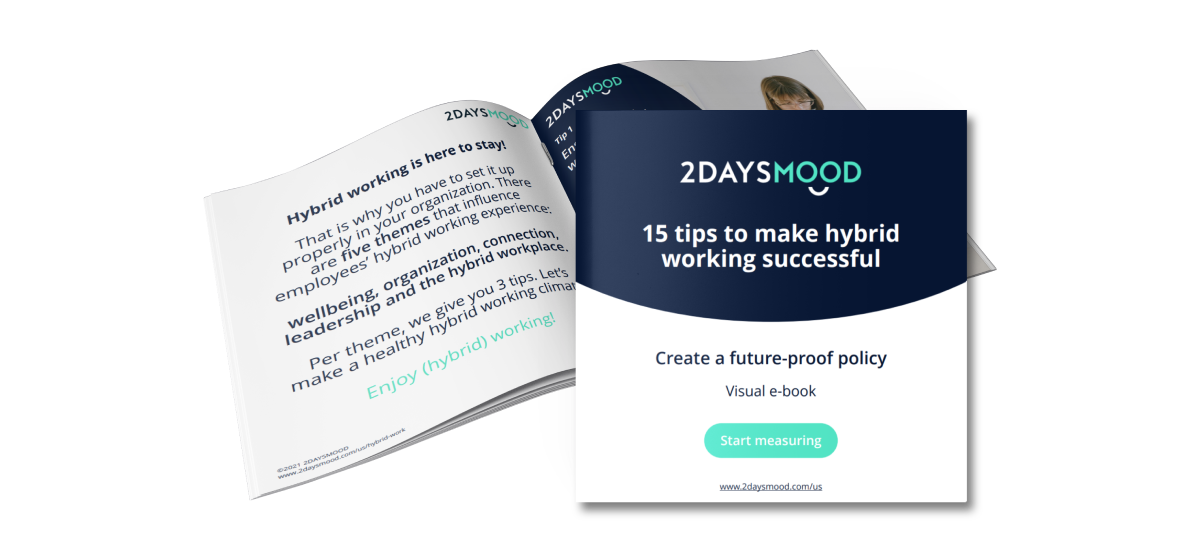Checklist Hybrid Working: Find the balance between working at the office and working from home

By Kirsten van Enk | 30/07/2020
Are your employees completely fed up with working from home or do they like the flexibility? Now that the lockdown measures are gradually easing, organizations are determining their approach to the post-corona way of working. Satisfaction about working from home varies widely, also within organizations. That is why the “hybrid” working culture is gaining ground for all non-vital professions: a balance between office and remote working.
But how exactly does that work? Research has taught us, for example, that a hybrid culture offers opportunities to boost enthusiasm and connections with colleagues again. However, scattered communication flows and lack of structure pose a risk. Time to ask the right questions!
In this article you can read recent research results and points for attention in hybrid working
Balance in a hybrid work culture: ask these questions!
How do you find the right balance between working from home and working at the office? Use this 2DAYSMOOD checklist to gauge the needs of employees and identify pitfalls at an early stage.
Do you want to administer the complete Hybrid Working questionnaire online and in multiple teams at the same time? Request it here.
Ask yourself the following questions, then ask them in your team or organization and answer them with “yes” or “no”. The more questions that are answered with “yes”, the more positive the remote working experience is. But there will probably also be questions that are answered with “no”. These are your focus points and topics for discussion in your team(s). Why is there a negative answer? And how can hybrid working, i.e. being partially present in the office, contribute to the improvement of these topics and your happiness at work, according to you?
1 – Overall, my home working environment is comfortable.
2 – When I work from home, I am more motivated to do my job than in the office environment.
3 – When I work from home, I experience a healthier workload than in the office environment.
4 – When I work from home I experience just as much a sense of fulfillment from my work as I do in the office environment.
5 – When I work from home, I know exactly what is expected of me by my direct manager.
6 – When I work from home, I experience a better work-life balance than in the office environment.
7 – When I work from home, I feel more energetic than in the office environment.
8 – When I work from home, I have more focus to do my job than in the office environment.
9 – When I work from home I can work just as well with colleagues as in the office environment.
10 – When I work from home, I feel connected to my colleagues.
Shaping hybrid working: additional questions
Are you already one step further and would you like to delve deeper into how your organization or team can shape hybrid working? Before making important decisions and rolling out a completely new hybrid work culture, it is wise to understand what works for your team, what is prioritized and why. Ask the following questions.
Tip: If you ask for feedback in advance and then continue to monitor whether your actions have the desired effect, you can make adjustments if necessary and keep employees satisfied in the longer term. This is possible with the realtime measuring method of 2DAYSMOOD.
1. How many days a week do we prefer to work from home?
The preference for the number of days per week working from home will be different for each organization and for each employee. It is therefore important to discuss with your team what their wishes are. For example, do they only want to work from home for one day, or do they prefer to work from home (more than) half of the time? Also look at the details of the working days together. Will you all be present on the office days or does everyone get full flexibility? And if some employees prefer to work remotely fulltime, what will they be missing? What will work look like on office and remote working days? Are important strategic meetings planned on office days, or will office days be all about investing in creativity, innovation and team building?
2. What is the main reason for us to work at home/at the office?
Try to find out what motivates employees to work from home and for what purposes they like to come to the office. Do employees consider the office as a meeting place with colleagues, to brainstorm and collaborate more efficiently? And do they work from home if they want to concentrate and focus? Or vice versa, do they experience too much distraction at home? Is travel time or, for example, safety the biggest barrier to returning to the office? Find the answers to these questions and organize the office environment accordingly. Take all necessary measures to ensure safety and communicate the associated rules clearly and frequently to all employees. Consider, for example, (extra) focus rooms, brainstorming rooms, telephone rooms, meeting rooms and lounge areas to meet your employees’ needs.
3. If we could adjust our remote workplace, what suggestion would we make?
Discuss what your team encounters when working from home. What do they need to make their remote workplace just as comfortable as the office environment? Try to come up with small actions and ideas together to tackle the disadvantages of working from home or to make optimal use of the advantages. Everyone will have best practices after months of “working from home”. There are also numerous remote working tips available online. Good luck!
Blogs & Whitepapers
We believe knowledge should be shared!
Prefer to talk to an expert? Then request a free consultation about your specific issue.











Happy employees make happy customers
These (HR) managers use 2DAYSMOOD and make real impact!
How? Our measuring method is the renewed employee survey, because it’s faster, easier and science based. A continuous source of data with which you can improve your (team) culture step-by-step and increase employee happiness. In short, that is profitable for your organization!

Jan-Herman Hanskamp

Emma Sluman

Rita Blankenberg

Robin Gerritsen
Leading Organizations Work with 2DAYSMOOD













Get in touch for free advice, a demo or quick scan!
Always the employee survey that suits you.
Do you want to increase happiness in your teams? Collect feedback on a specific subject? Monitor stress in real-time? Or do you need a baseline survey to get insight in the drivers of your culture?
We are happy to help with your specific challenge, using:
- Our expertise, experience and energy!
- A demo of our tool (if you like)
- The opportunity to try it for free
- Or enjoy reading our brochure



